I remember the day clearly when gardening changed for me. It was the second year living with my new landscape — the first large garden I had ever created from scratch. I was making the rounds along the path, admiring what still was very much just a nice layer of wood mulch with a few green things sticking up. I paused at one point when a glimmer of yellow caught my eye. Kneeling down low I saw fat caterpillars moving carefully across thin stems, hanging down like monkeys to get the last bit of a leaf. My first inclination was to pick them off or find some spray, because that’s how I was raised.
But if I hadn’t sat there another 20 minutes just watching — even listening to them eat — I would have become a very different kind of gardener. When I went inside and did some research, I discovered I had a colony of monarch larvae on swamp milkweed. Since then I’ve learned that making a garden is a gift of letting go and giving nature a chance to teach me what works and what doesn’t.
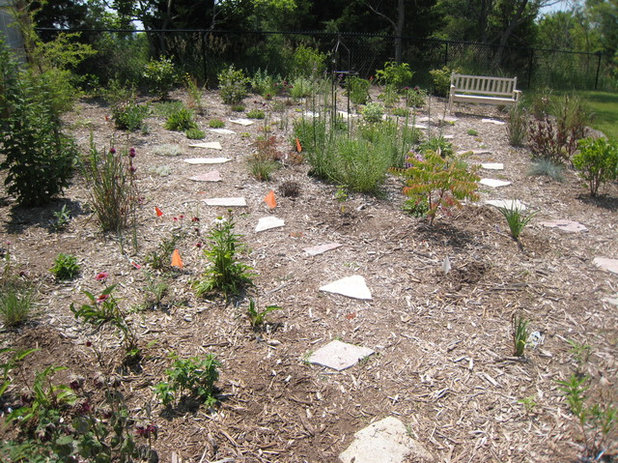
Benjamin Vogt / Monarch Gardens
2008: Gardening 101A garden, by its very nature, changes and evolves. Sometimes we work too hard to keep it how it is — like a static painting with every plant remaining in the same place, with the same size and same blooms every year. That’s impossible. If we can learn to let go and embrace the changes in a garden, we’ve made the first step toward gardening in a way that constantly surprises and grips us on a deeper level.
Here is my garden in July 2008. It’s ugly. I had no idea what I was doing. I trusted plant tags but discovered they were often wrong for various reasons. But I had faith in the vision — the monarchs had showed me that I was on the right path (pun intended) even if I didn’t know what it was yet.
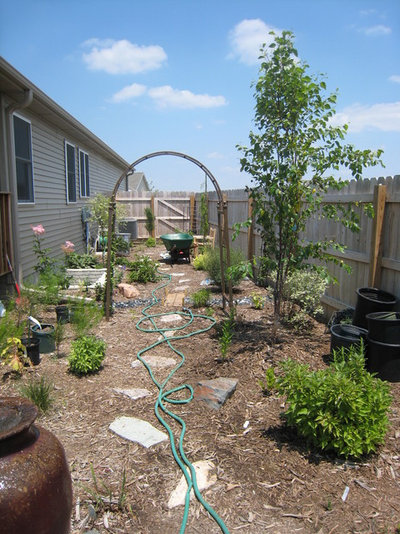
Benjamin Vogt / Monarch Gardens
Just go for it. Plant with a diversity of species, heights, forms, colors and textures. You can see that my garden had a few woody plants — a dogwood shrub, a river birch. Both died. This happens in the garden, and it doesn’t mean you are a failure.
Embrace mistakes. Get back up and dust yourself off. I got a replacement birch, and it grows about 4 feet every year, harboring house wrens as they make their final leap into a nearby birdhouse. But the larger lesson here is to plant shrubs and trees first; they anchor the landscape and are the bones with which you can add the sinew (pathways) and muscle (flowers and grasses).
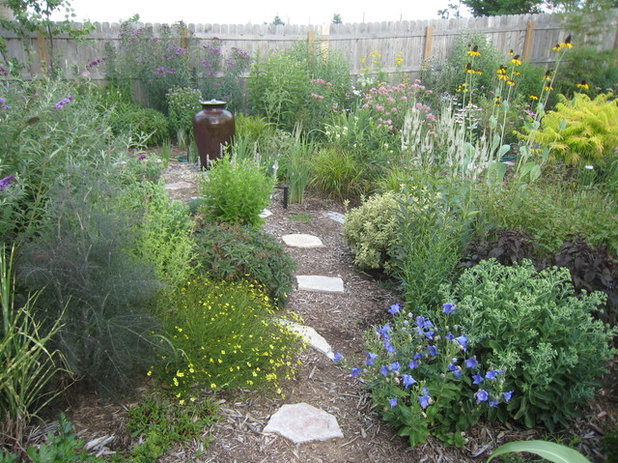
Benjamin Vogt / Monarch Gardens
2009: Money IssuesI have a confession to make — in one day I spent $1,000 at a local nursery. I loaded up two to three carts’ worth of plants, buying the biggest pots they had. It was foolhardy, but I wanted a garden ASAP and wasn’t willing to wait on seeds or seedlings. This was a mistake. Those larger plants didn’t grow any faster than seedlings that would sprout on their own over the years.
I once bought what I called a Charlie Brown tree for $5 on fall clearance at a big-box store — it was scraggly and sickly, but I felt so bad for it, dying on the hot pavement. Four years later it’s as tall as the same species of tree I planted at the same time that came in a 20-gallon container. Save money and water and transplant stress. Buy smaller pots. Even grow your own plants from seed.
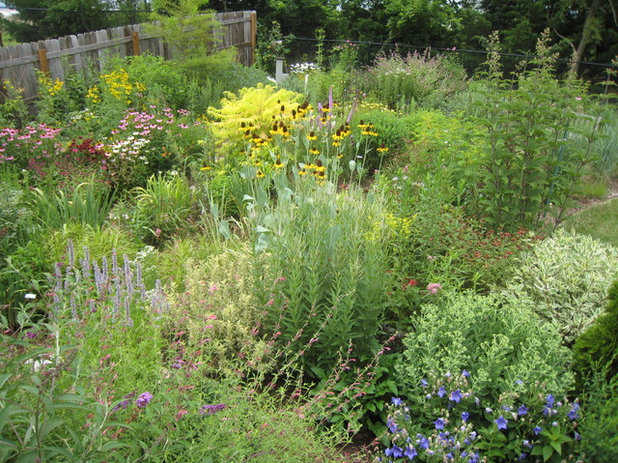
Benjamin Vogt / Monarch Gardens
2010: Missing ElementsIt was the third full year that my garden took off. Here is an image from summer 2010 — rich with texture and various bloom colors and sizes. But when I looked at this vista I only saw what was missing — different foliage colors and shrubs. I had to go back in and add a few viburnums, serviceberries, an elderberry and a ninebark.
It was frustrating, because I realized I was gardening backward — I was so focused on flowers that I forgot what gives the flowers more meaning and punch, more definition, more seasonal interest. I forgot that what makes a garden surprising and memorable is diversity — and that diversity also translates into a far more interesting and wildlife-friendly fall and winter garden.
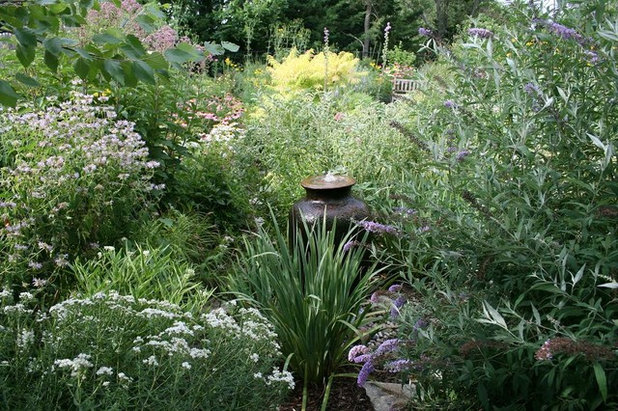
Benjamin Vogt / Monarch Gardens
2011: Plant Trust and ResearchI got into more trouble in 2011. Like any avid gardener, I packed in my plants tightly. The benefit is that I had few weeds, as the plants shaded them out; and the soil temperature was more regulated, so I needed less irrigation. But I also always ignored the research I did on mature plant sizes — so plants that should have thrived died out instead.
This image is what happens when you ignore horticultural info, although I must say I enjoy being touched by my plants: having mountain mint’s sweet fragrance stuck to my arms the whole day, or startling a butterfly from a flowering perch. This physical closeness to the garden has made me psychologically closer to it. I see more; I hear more; I taste more. I learn way more as I make insect discoveries and keep tabs on what plant is working where, what’s declining, what’s self-sowing, because it’s all so close to me. Exhilarating!
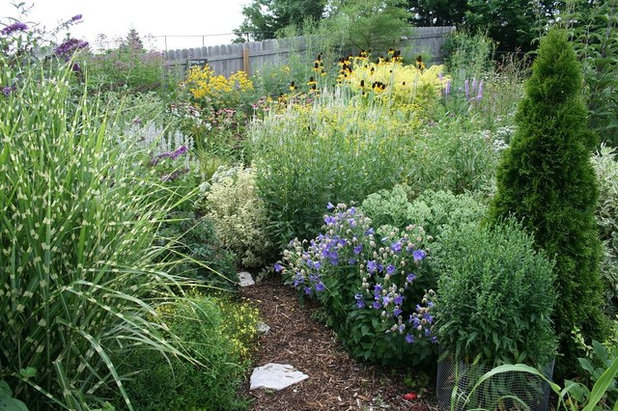
Benjamin Vogt / Monarch Gardens
By 2011 the garden was starting to outgrow my intentions for it — the art was becoming artifice, and plants began showing that they had minds of their own. At first I edited — trimmed, divided, transplanted — but it became far too much work for too little impact. I sat back one day on the deck listening to the birds, trying to trace the zigzag path of bees from flower to flower, when I finally conceded to the nature of nature.
Since 2011 I’ve let the garden seed where it wants, except for the pathways. When a dependable plant doesn’t come back in spring, I no longer mourn its loss but celebrate what comes up in its place as a delightful discovery. Plants move, find where they best want to be, and I know that what I’ve started is more like a child growing up than a sculpture on a shelf. It’s alive!
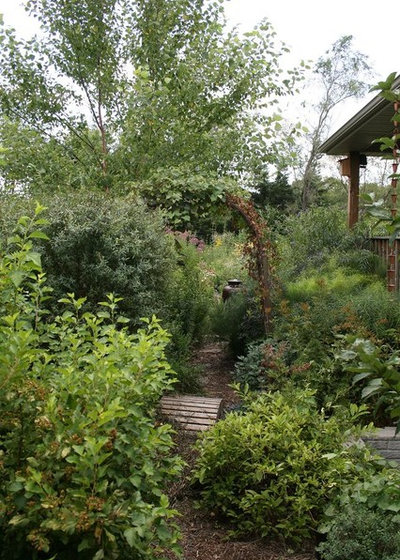
Benjamin Vogt / Monarch Gardens
Sometimes I think I’ve just been lucky with gardening. My mother never had much success in her landscape with me around, and so I knew nothing when I started.
But I love reading and researching. Before I dig in a plant, I consult a dozen sources on what conditions each plant prefers, and place them accordingly. I think that’s the key — don’t trust plant tags. Do research online and, if you can, always buy native plants accustomed to your soil and climate that are from your locale. This can save you a world of hurt.
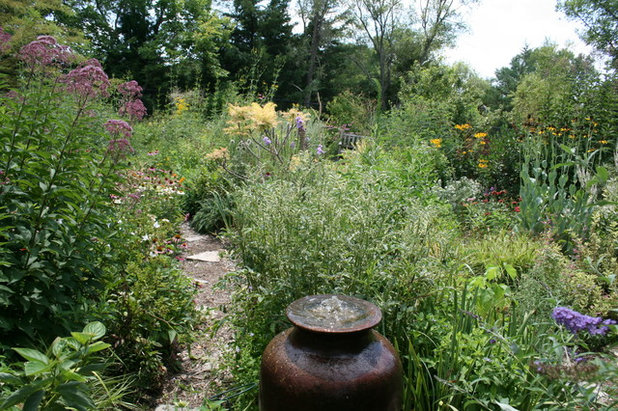
Benjamin Vogt / Monarch Gardens
2012: The Big Switch to NativesThis is a picture from late July 2012. We were in the middle of a massive drought where we saw less than 1 inch of rain over nearly three months from June to September. I had not yet watered the garden — I usually do so no more than once each year, but confess I did three times in late summer and then in late fall to help things overwinter.
In the wake of the drought (and the dearth of wildlife that came with it), I began taking out nonnative plants and replacing them with natives — both for the greater wildlife draw and the lower maintenance when the plants are properly sited (also mitigating the need for chemical sprays and fertilizers). How does my drought-stricken garden look to you?
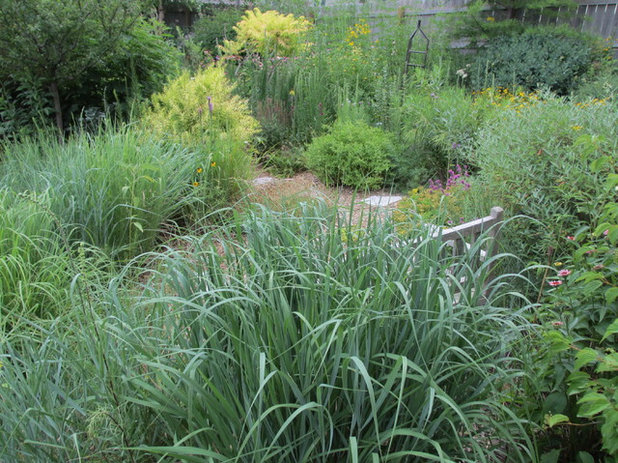
Benjamin Vogt / Monarch Gardens
Accept nature’s editing. Every year the garden is different. One plant thrives, another waffles. Genista moth larvae decimate a Baptisia, and Liatris lean the wrong way. The birch begins shading out some asters, and the Joe Pye Weed mysteriously dies back. It’s OK. I’ve let go so I can garden on a different level and learn from the evolution of what I’ve given birth to. I’ve even let some things start growing in the lawn that borders the garden just to see what happens — I’d never have done that five years ago.
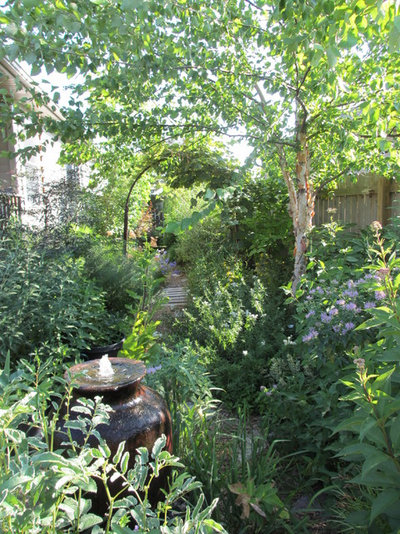
Benjamin Vogt / Monarch Gardens
When you plan a garden, consider the foundation plants, like shrubs and trees. Place them in areas that provide you with privacy but also will surprise a visitor at every turn — like in the middle of a border or at a turn in a path. Attempt to use as many adaptable native plants as you can, and research the exact condition they’ll need to thrive with some benign neglect.
After that keep yourself from editing too much — see what the garden has to teach you, what each plant and bird and insect has to share about how nature works. Be patient. Let go. Learn to garden on a deeper level.





